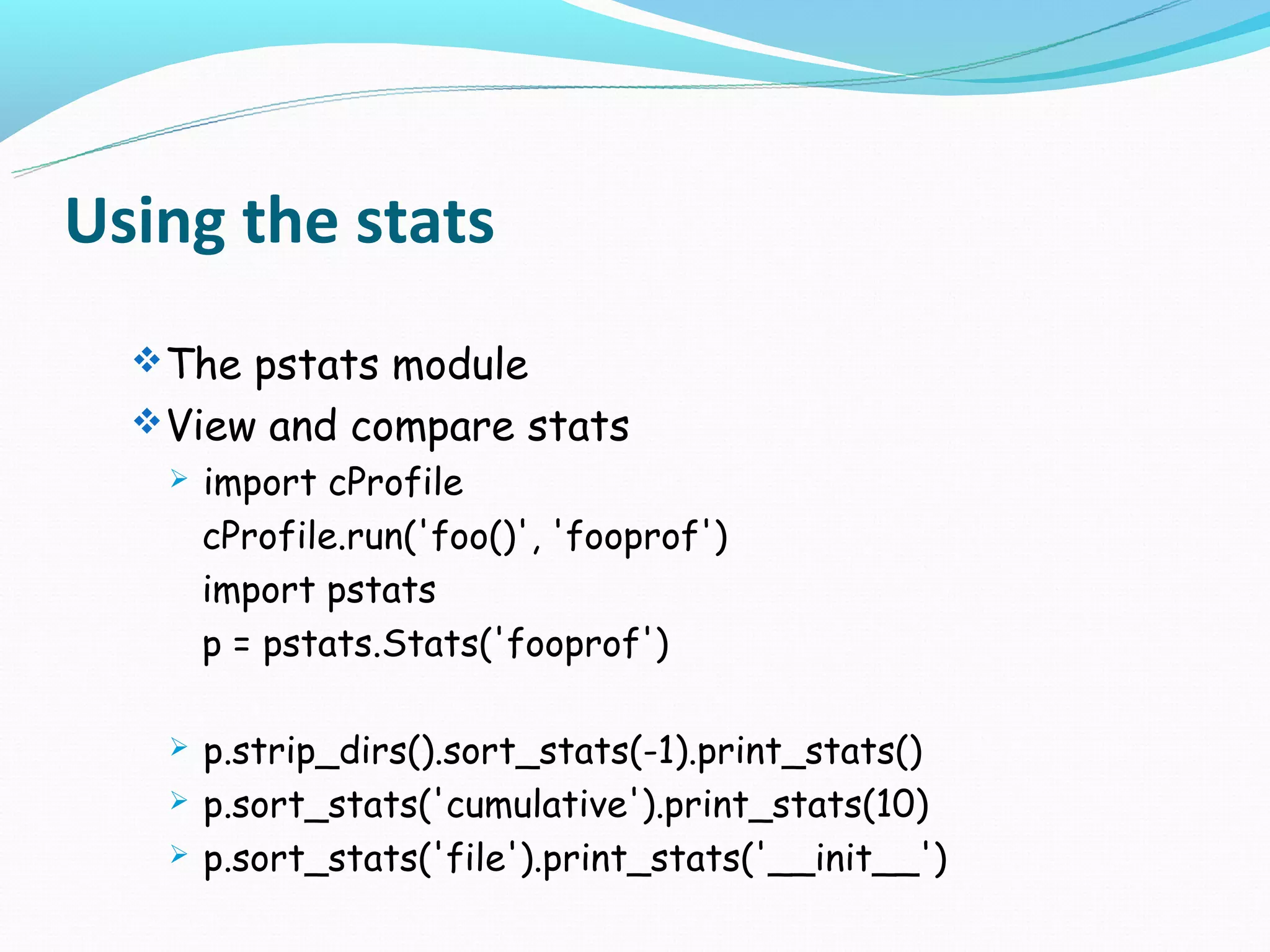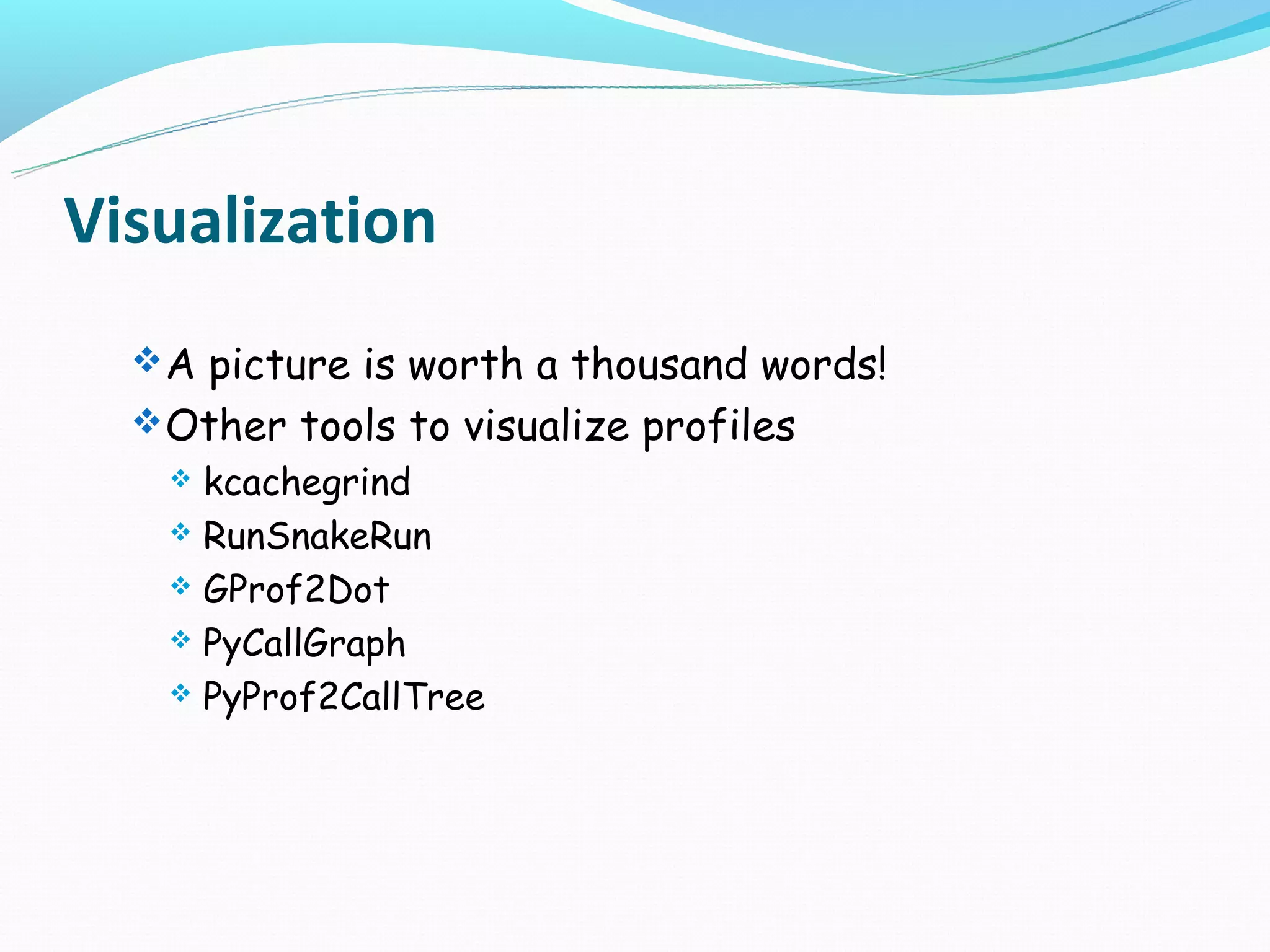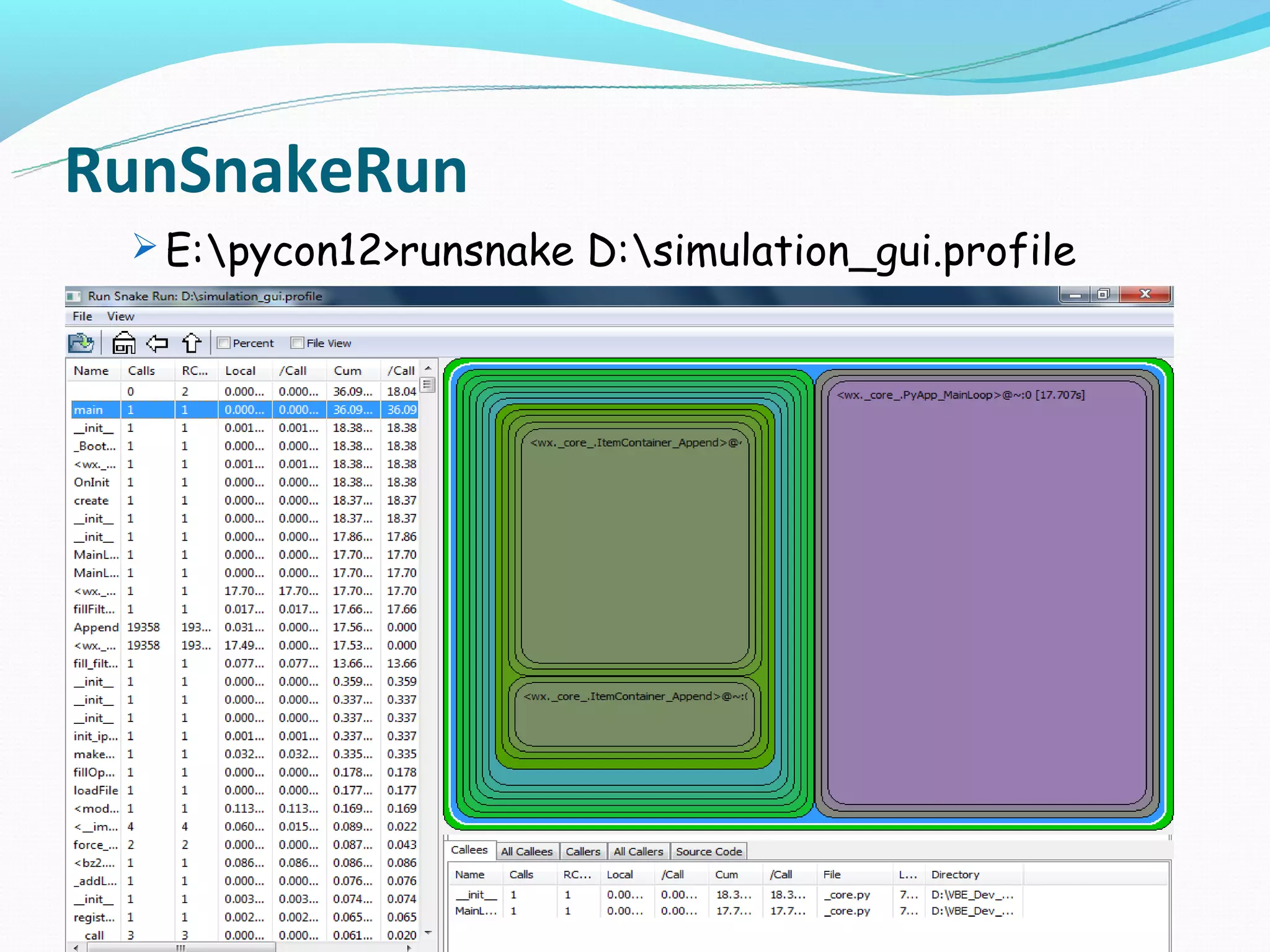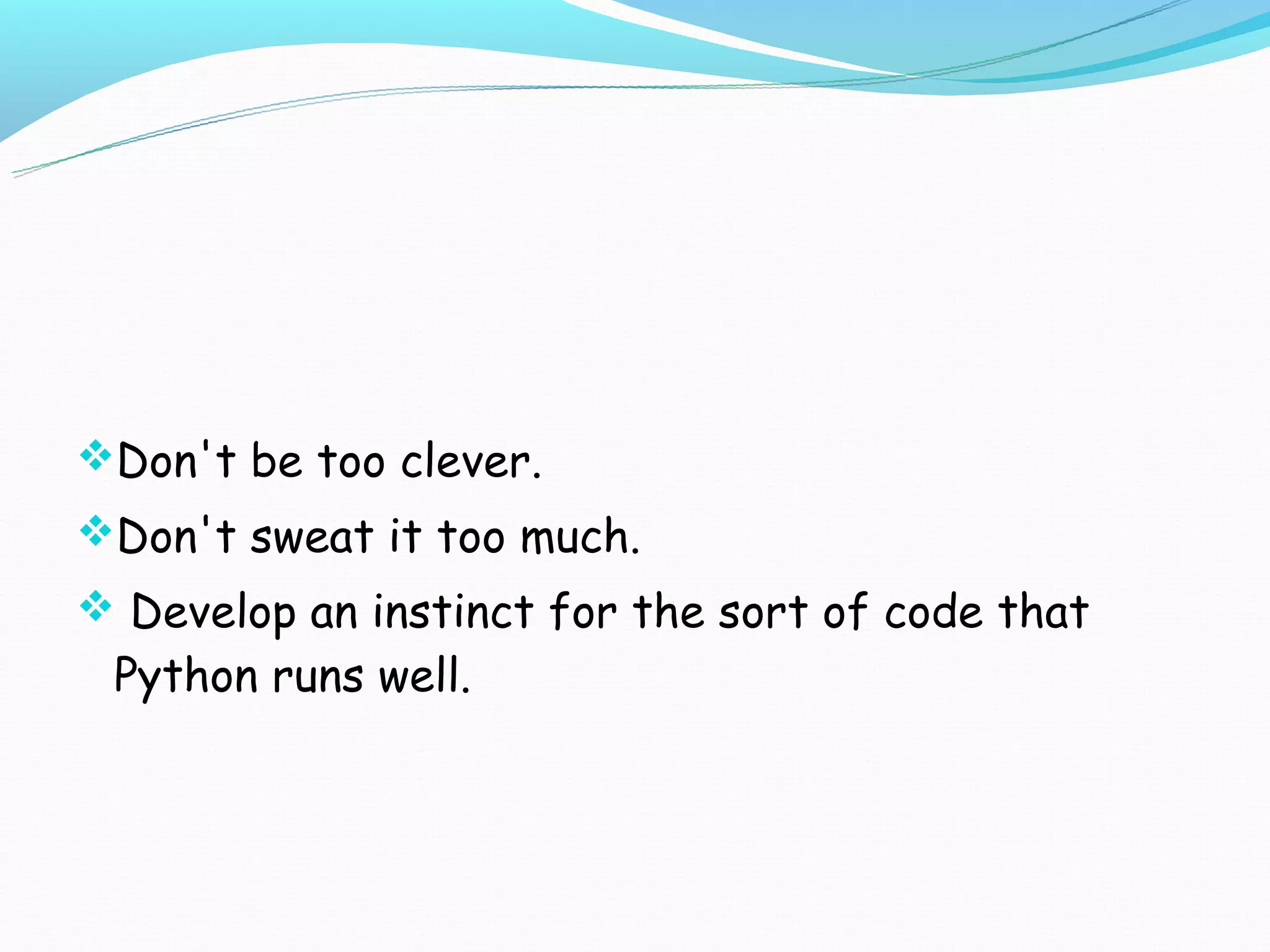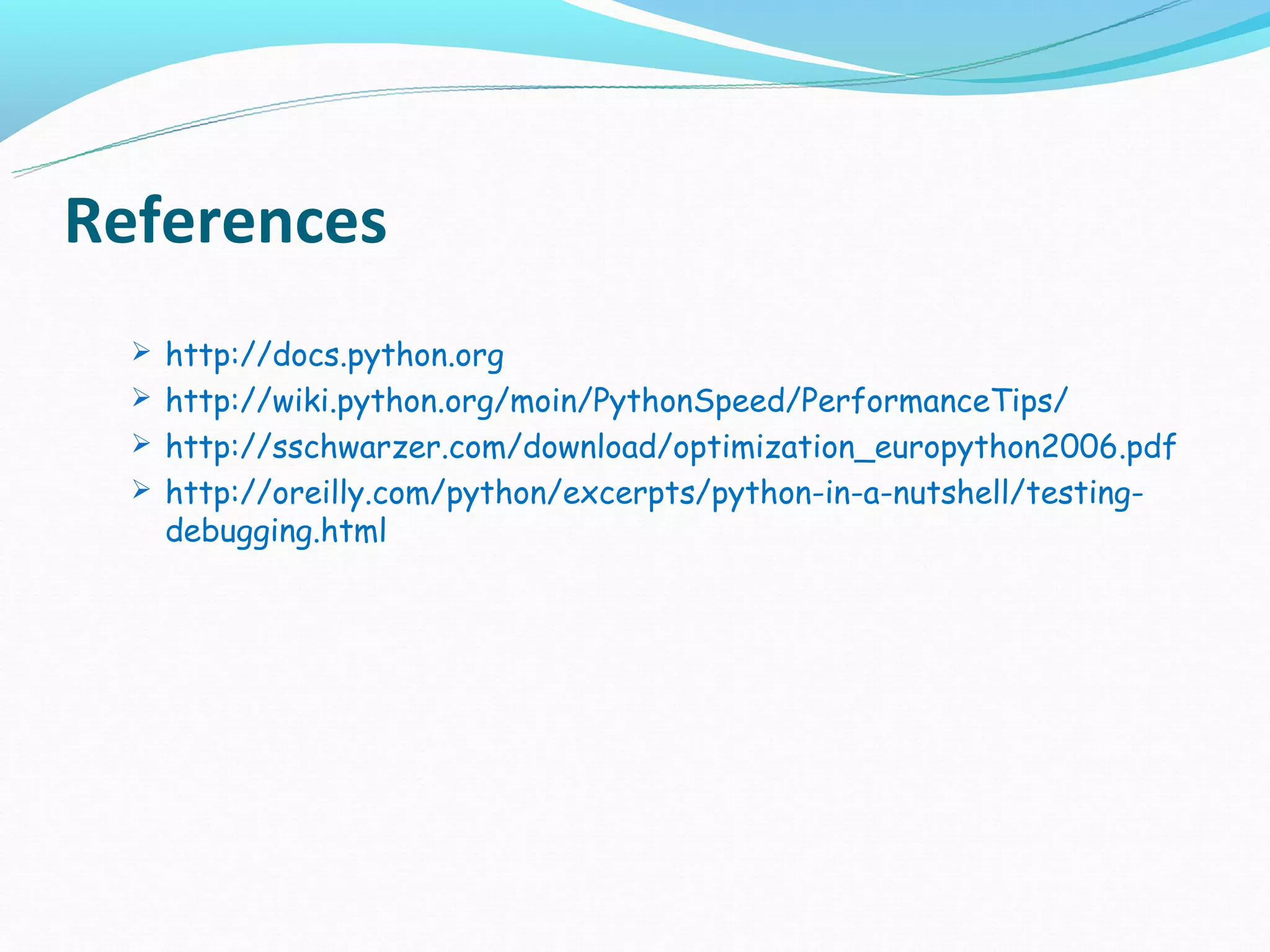This document discusses various techniques for optimizing Python code, including:
1. Using the right algorithms and data structures to minimize time complexity, such as choosing lists, sets or dictionaries based on needed functionality.
2. Leveraging Python-specific optimizations like string concatenation, lookups, loops and imports.
3. Profiling code with tools like timeit, cProfile and visualizers to identify bottlenecks before optimizing.
4. Optimizing only after validating a performance need and starting with general strategies before rewriting hotspots in Python or other languages. Premature optimization can complicate code.
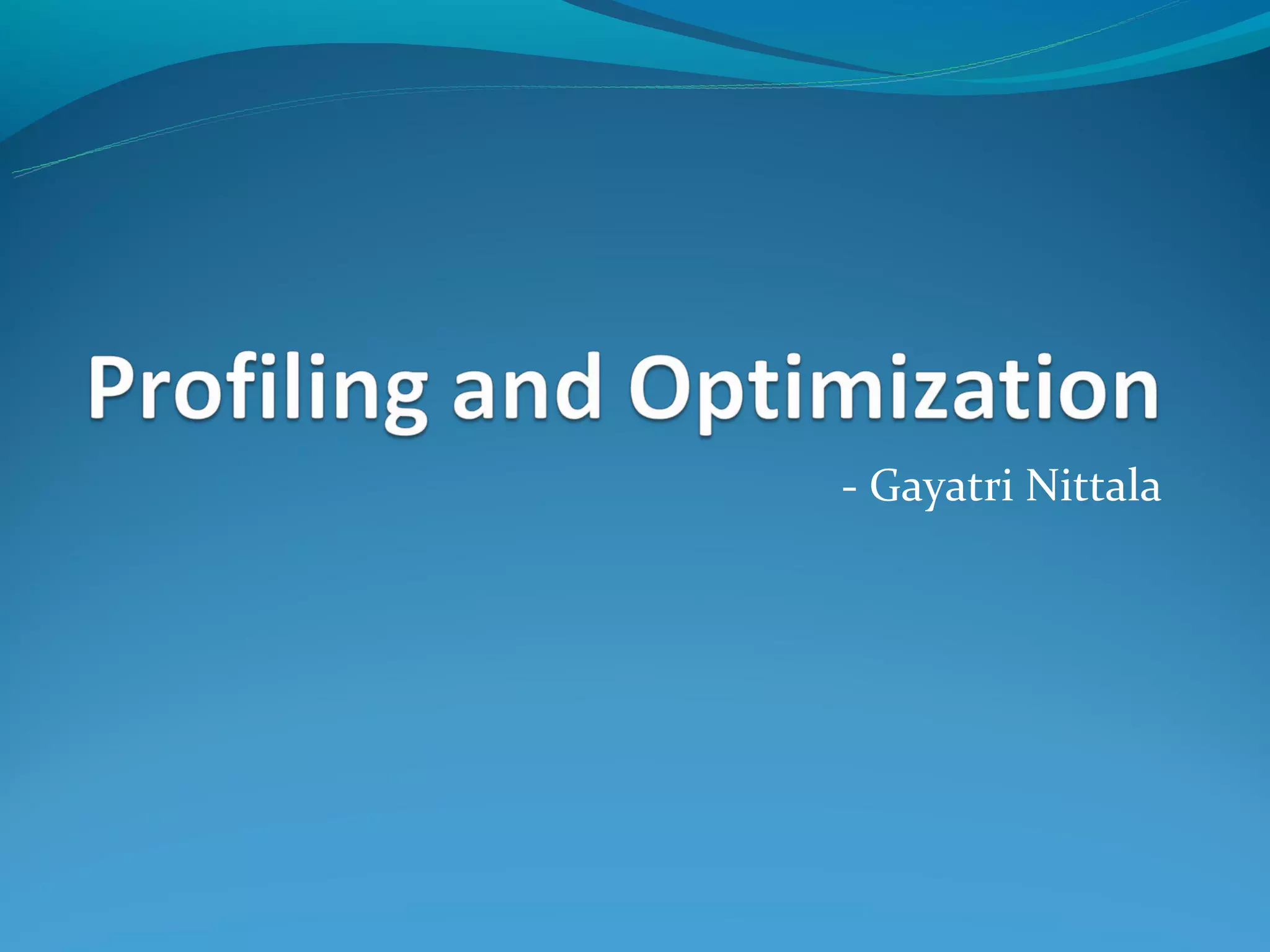
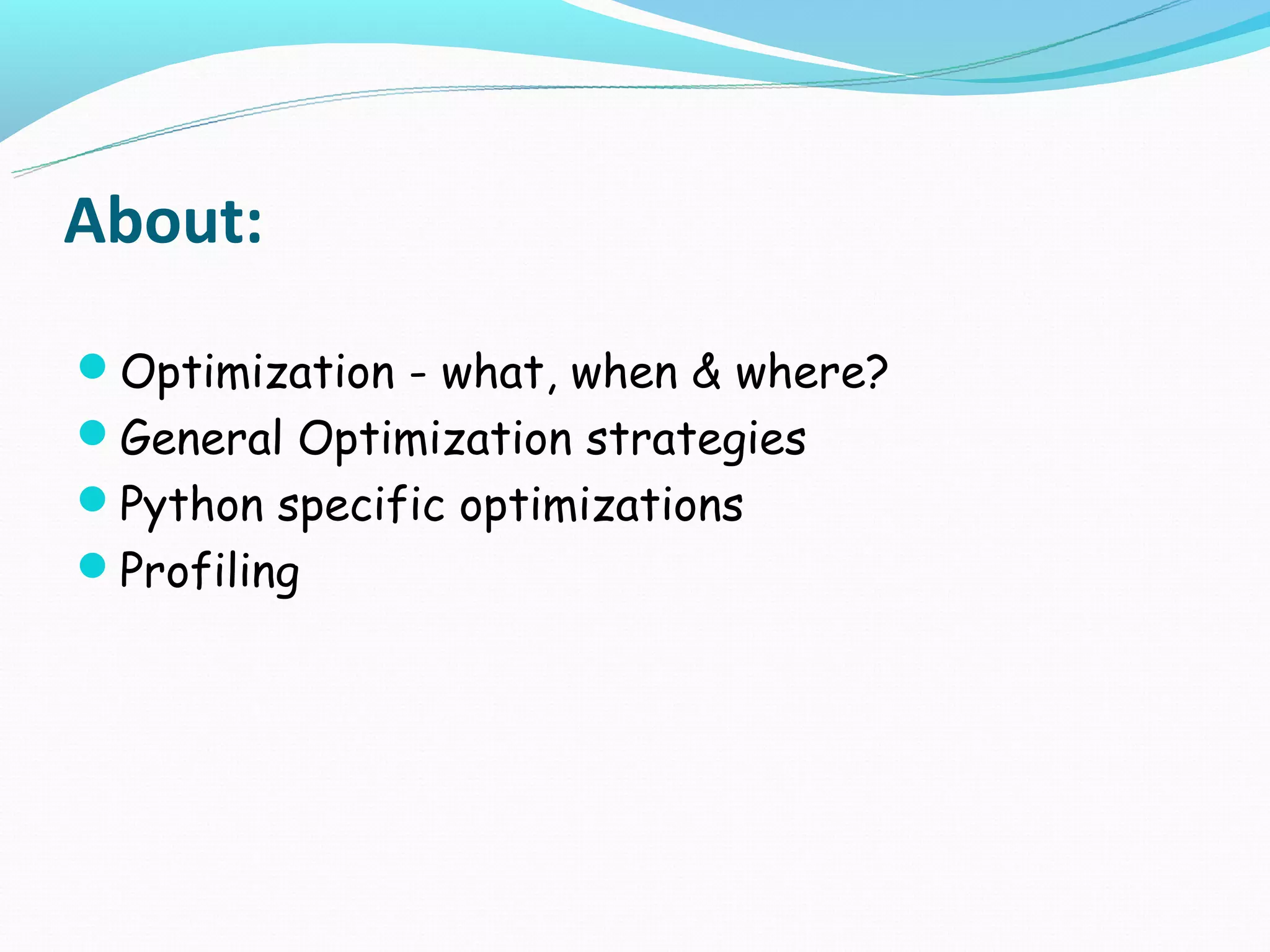
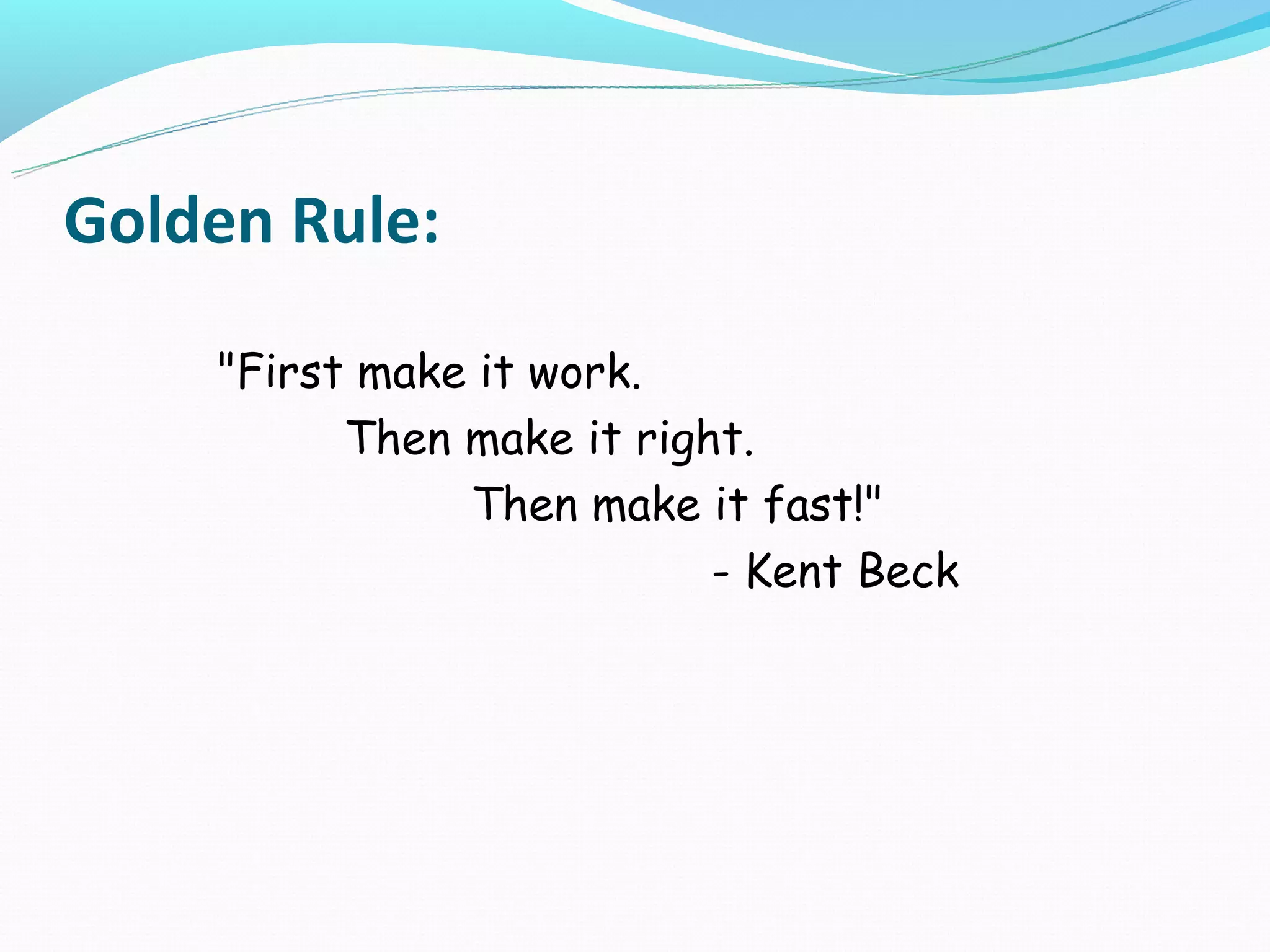
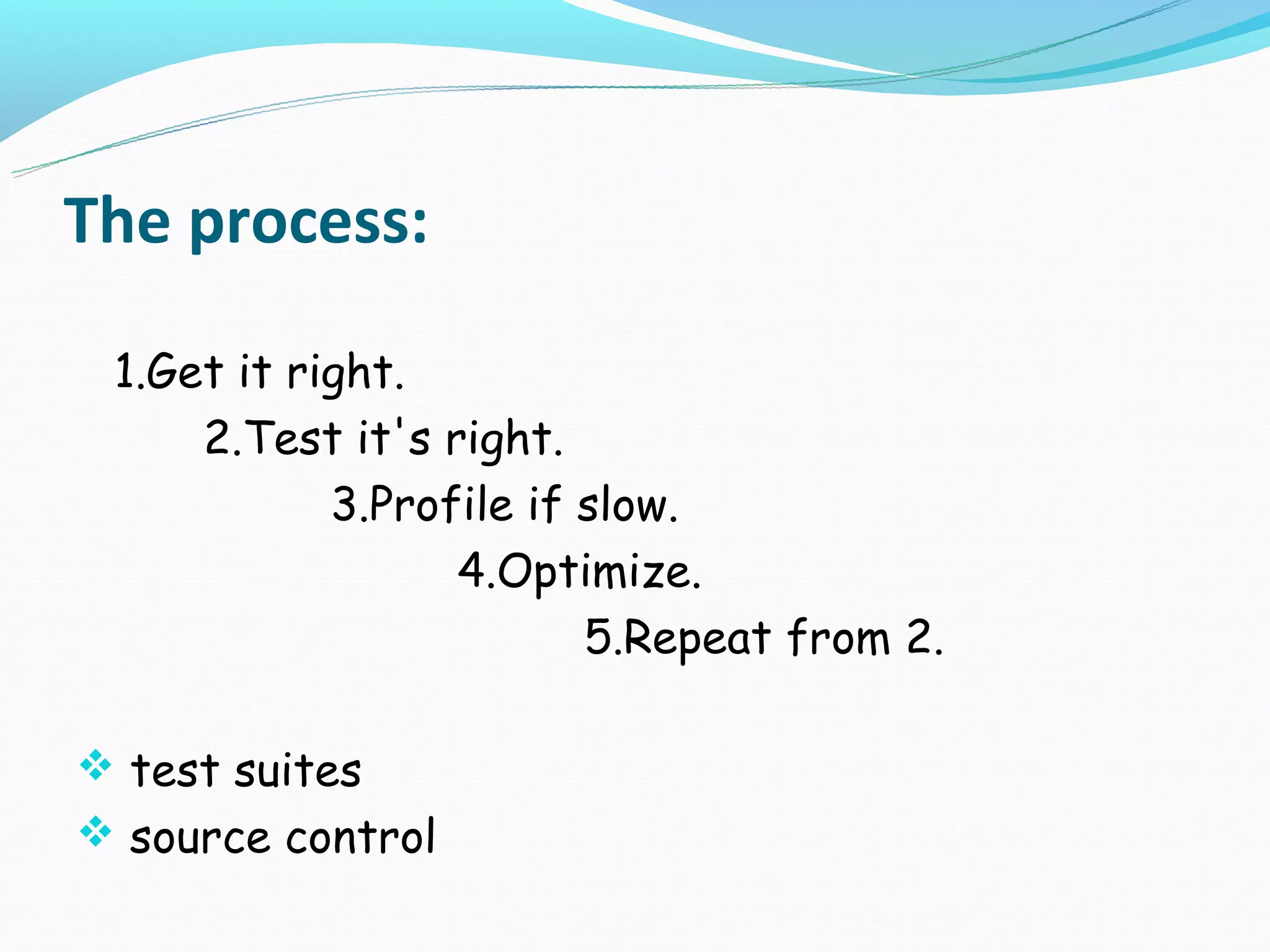
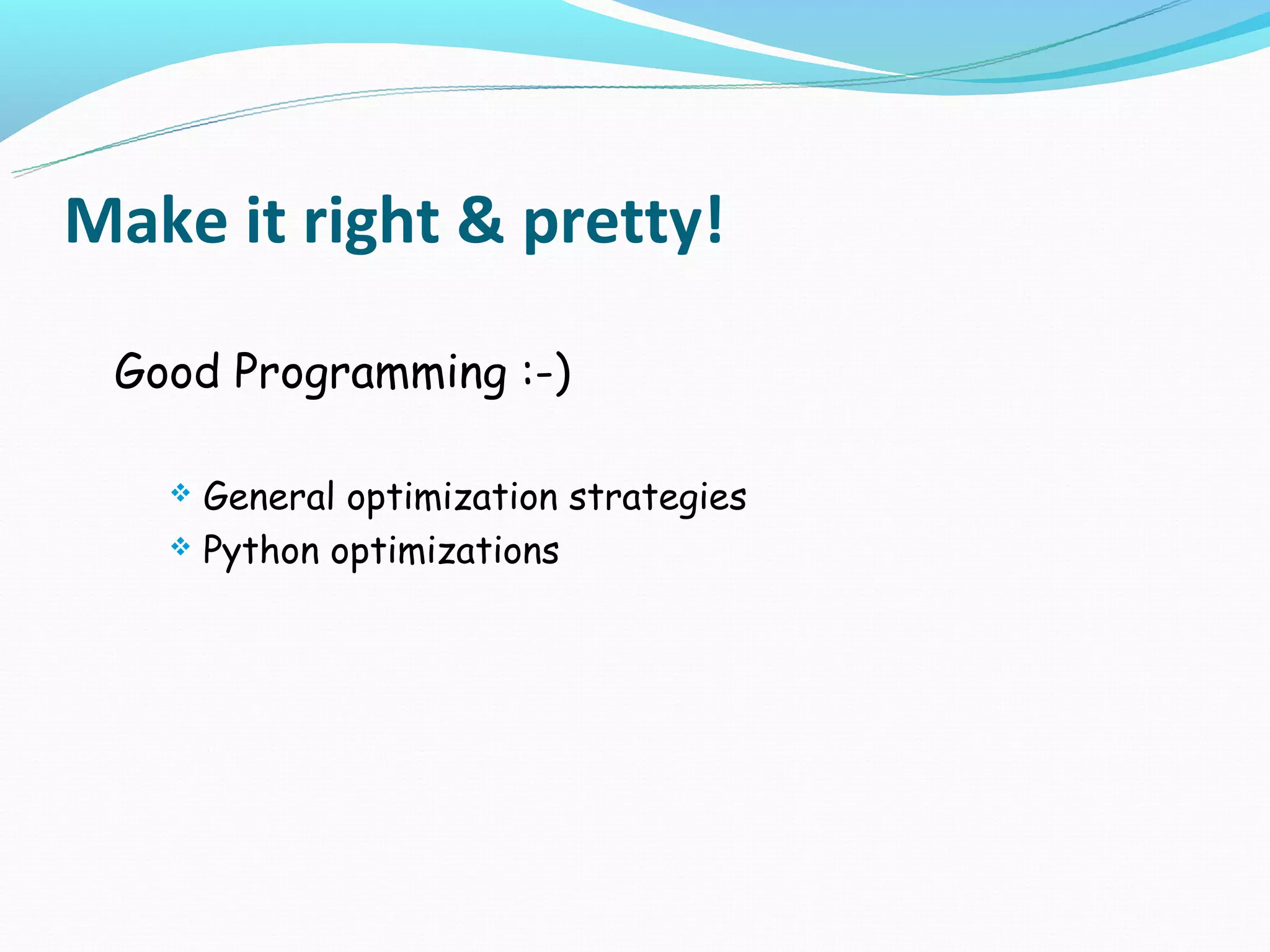

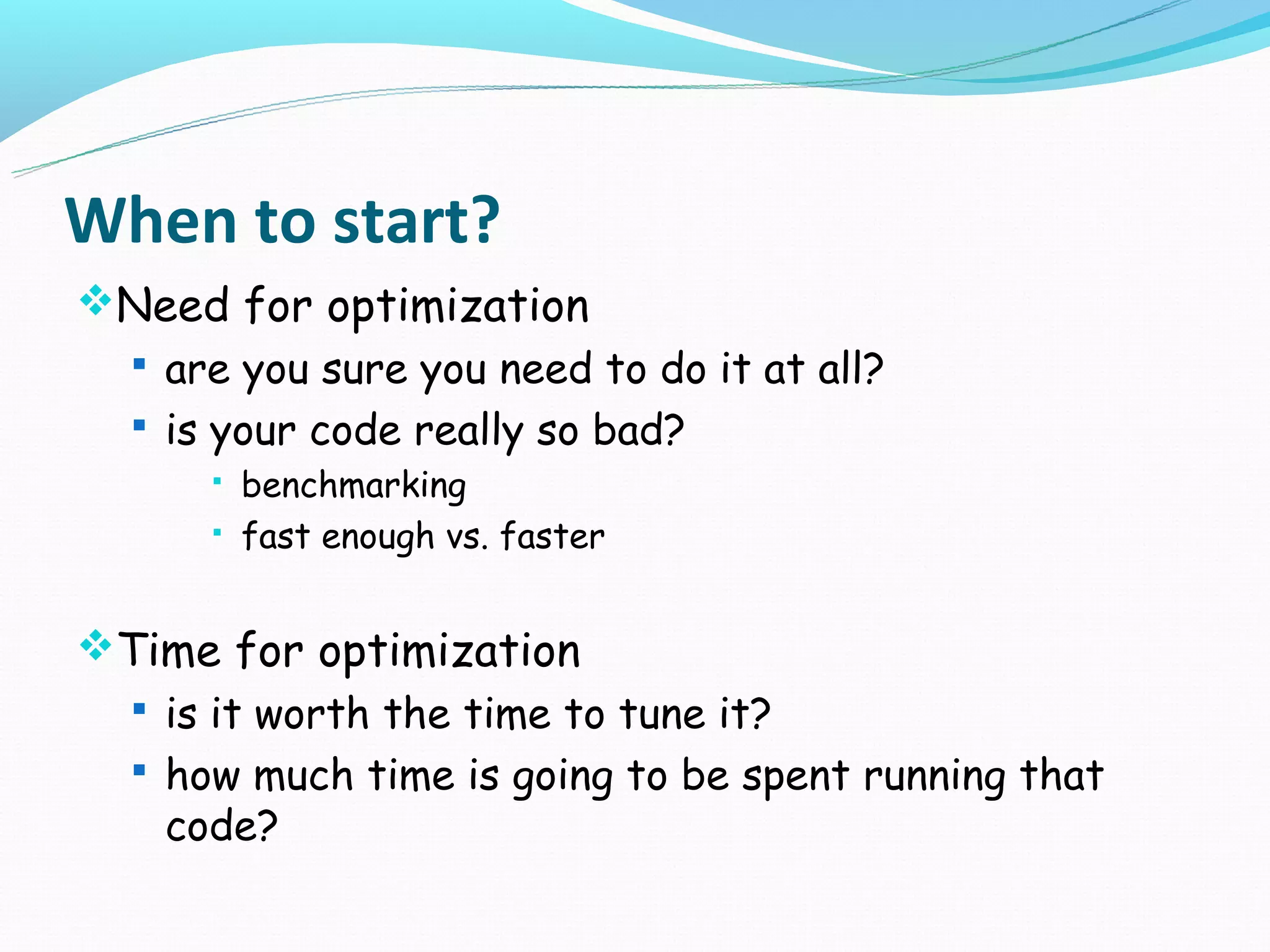
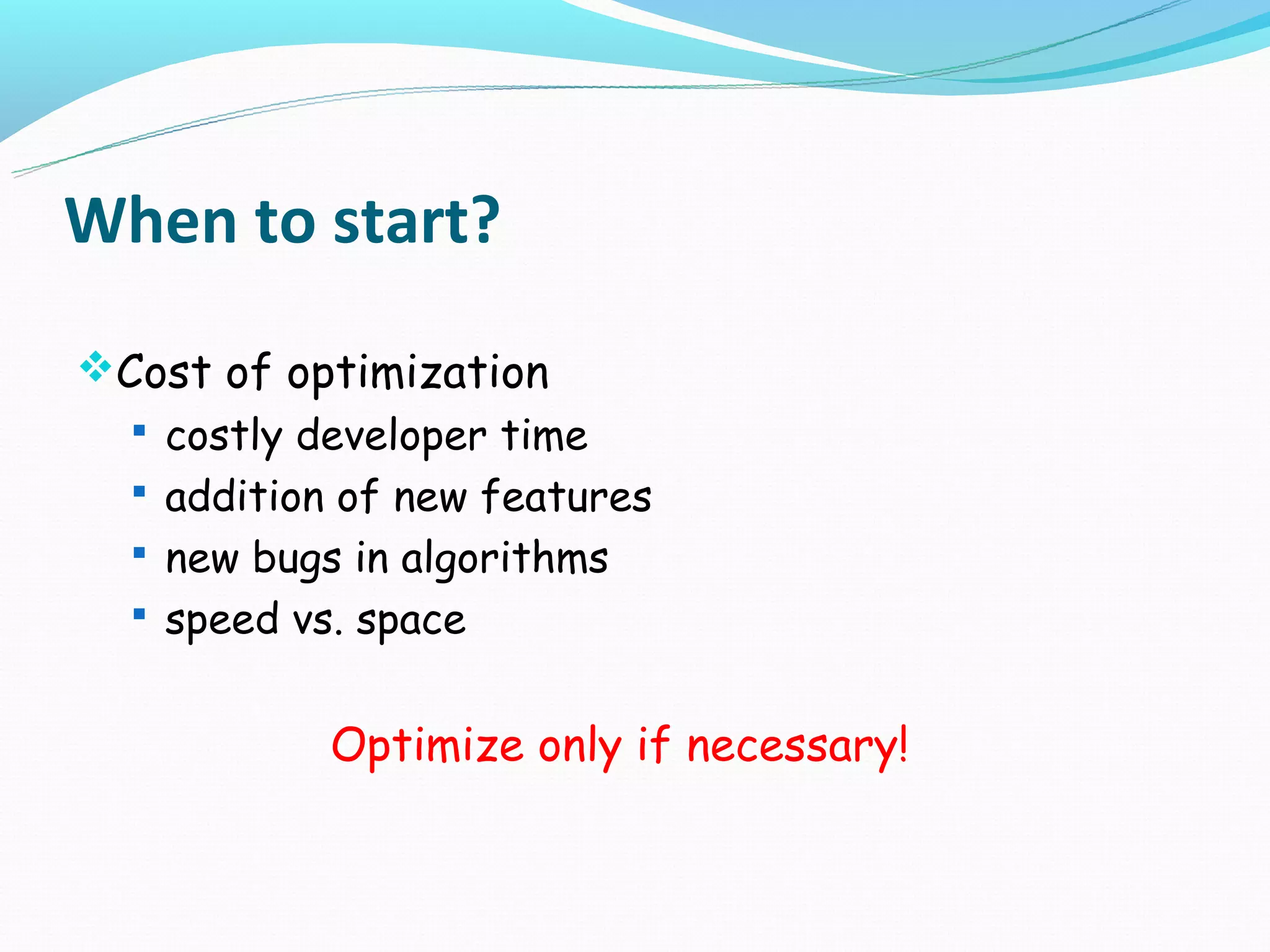
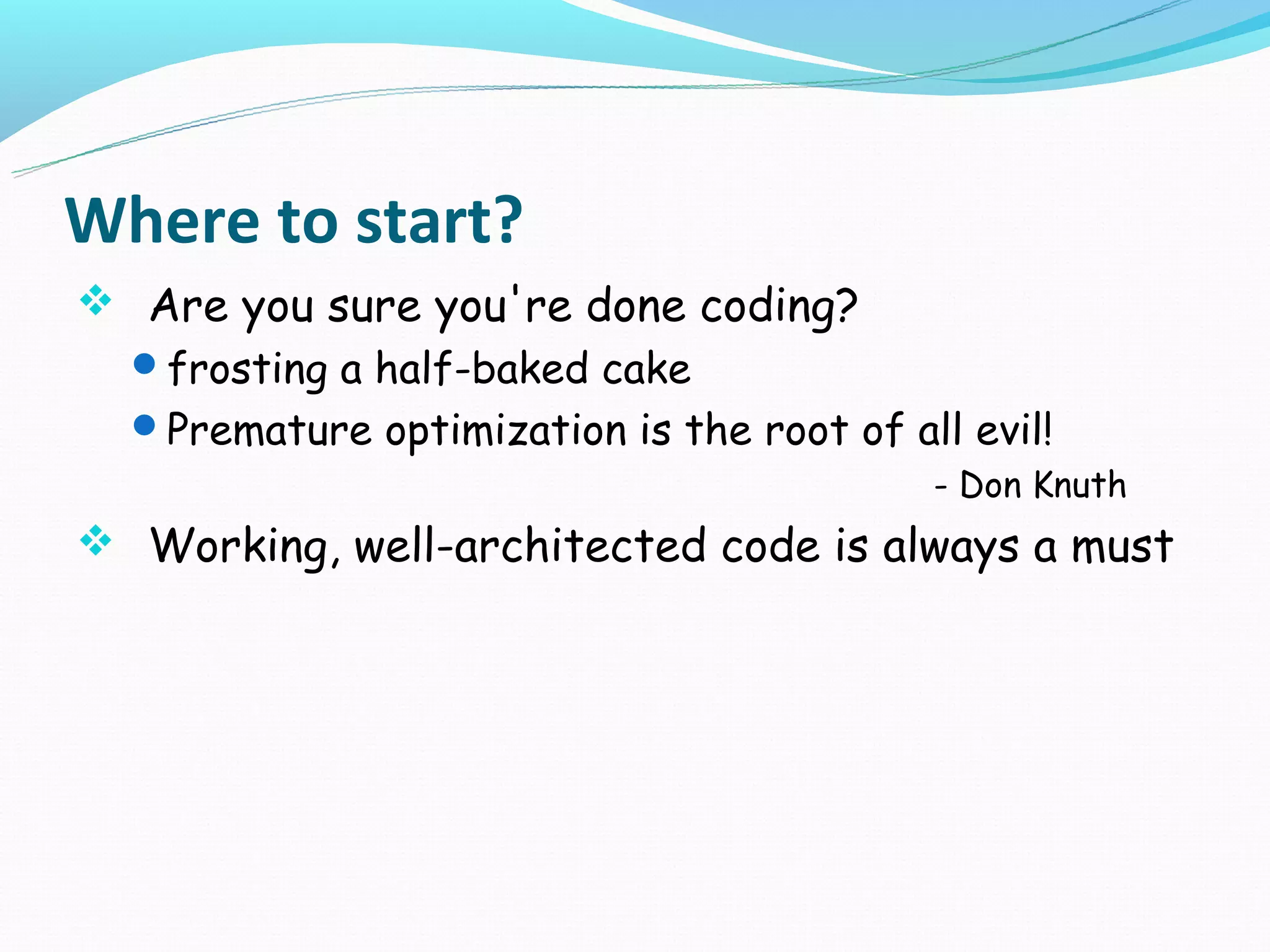
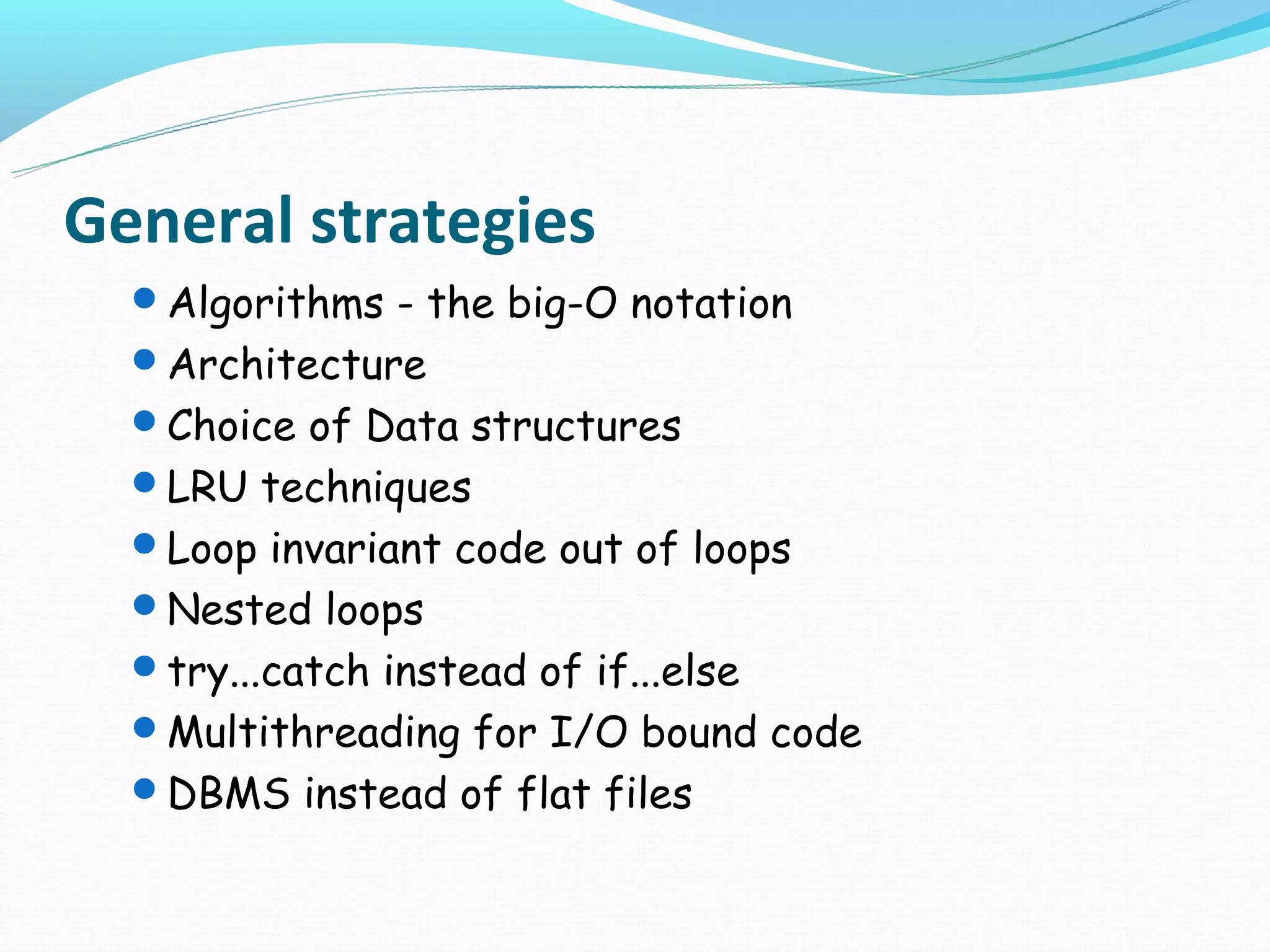
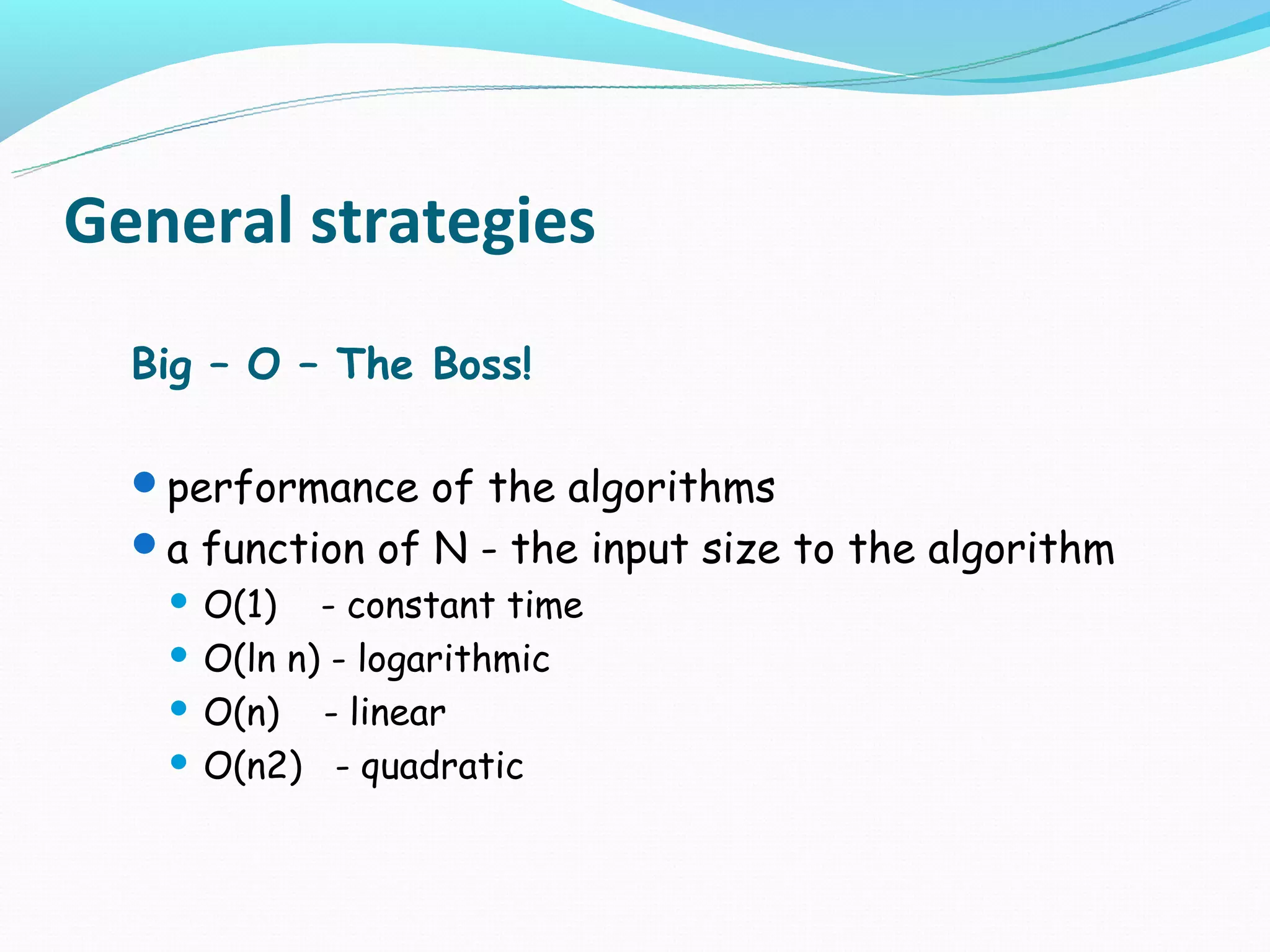
![Common big-O’s
Order Said to be Examples
“…. time”
--------------------------------------------------
O(1) constant key in dict
dict[key] = value
list.append(item)
O(ln n) logarithmic Binary search
O(n) linear item in sequence
str.join(list)
O(n ln n) list.sort()
O(n2) quadratic Nested loops (with constant time bodies)](https://image.slidesharecdn.com/profilingandoptimization-120929002305-phpapp02/75/Profiling-and-optimization-12-2048.jpg)
![Note the notation
O(N2) O(N)
def slow(it): def fast(it):
result = [] result = []
for item in it: for item in it:
result.insert(0, item) result.append(item)
return result result.reverse( )
return result
result = list(it)](https://image.slidesharecdn.com/profilingandoptimization-120929002305-phpapp02/75/Profiling-and-optimization-13-2048.jpg)
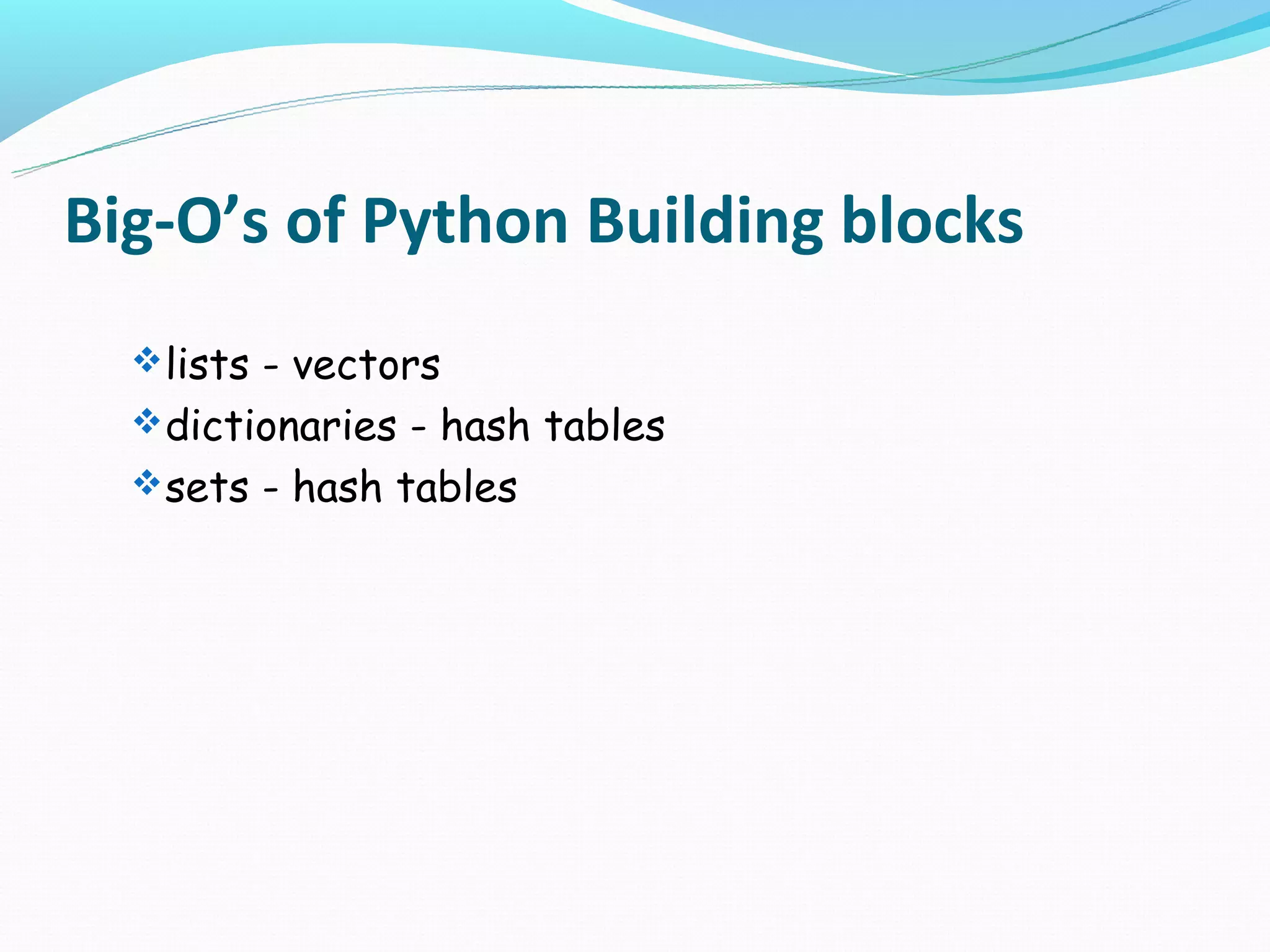
![Big-O’s of Python Building blocks
Let, L be any list, T any string (plain or Unicode); D
any dict; S any set, with (say) numbers as items
(with O(1) hashing and comparison) and x any
number:
O(1) - len( L ), len(T), len( D ), len(S), L [i],
T [i], D[i], del D[i], if x in D, if x in S,
S .add( x ), S.remove( x ), additions or
removals to/from the right end of L](https://image.slidesharecdn.com/profilingandoptimization-120929002305-phpapp02/75/Profiling-and-optimization-15-2048.jpg)
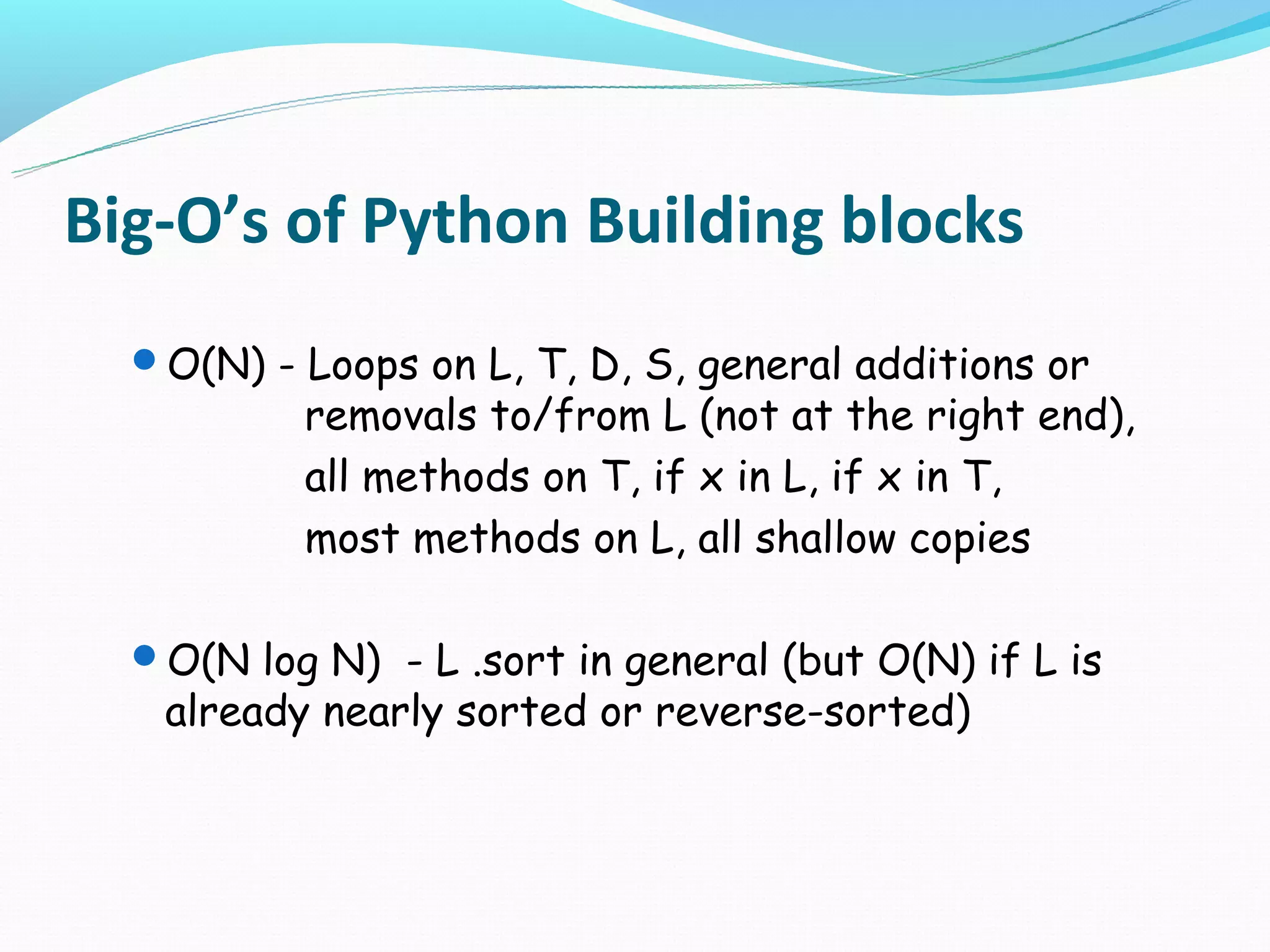
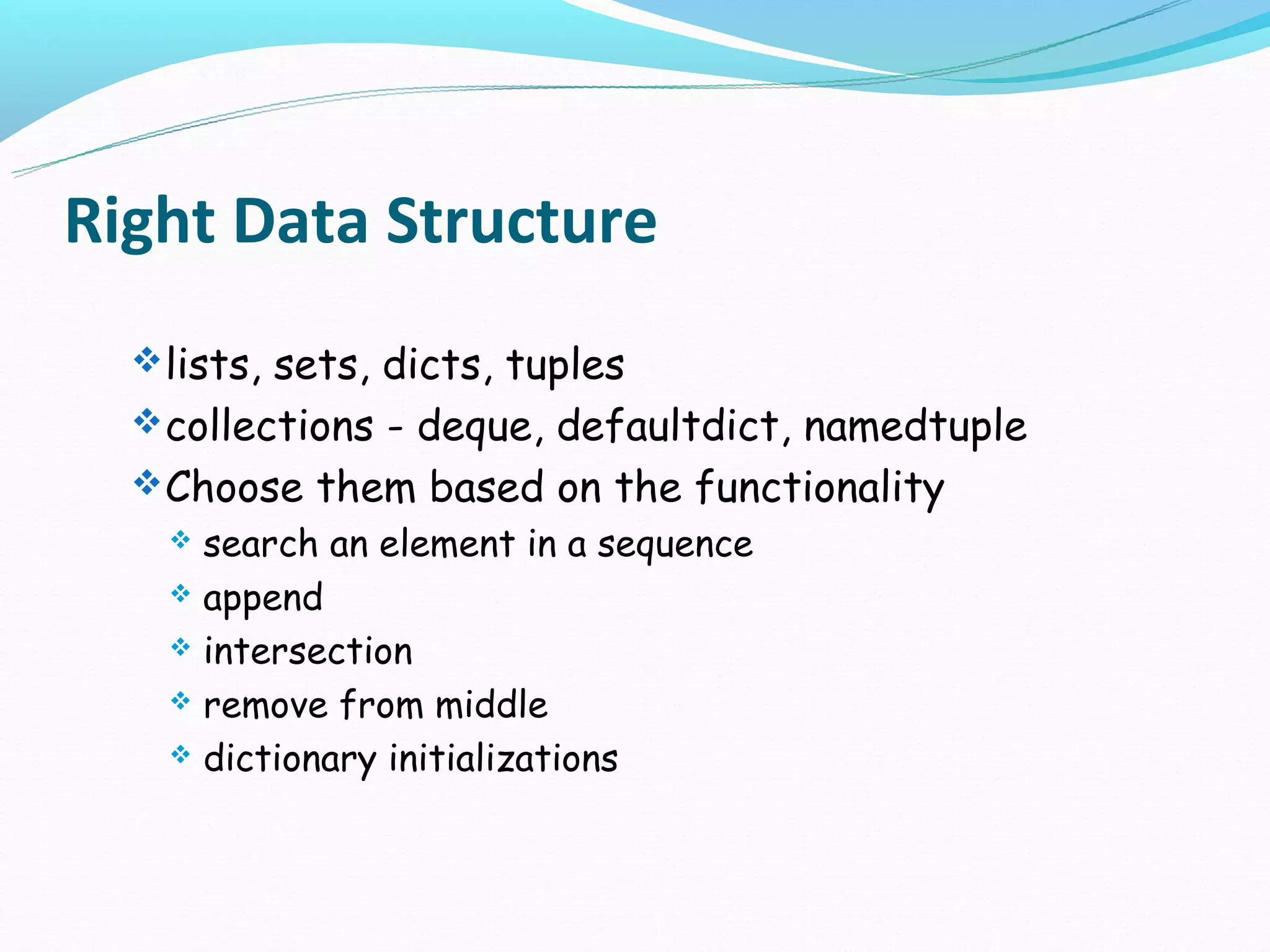
![Right Data Structure
my_list = range(n)
n in my_list
my_list = set(range(n))
n in my_list
my_list[start:end] = []
my_deque.rotate(-end)
for counter in (end-start):
my_deque.pop()](https://image.slidesharecdn.com/profilingandoptimization-120929002305-phpapp02/75/Profiling-and-optimization-18-2048.jpg)
![Right Data Structure
s = [('yellow', 1), ('blue', 2), ('yellow', 3), ('blue', 4), ('red', 1)]
d = defaultdict(list)
for k, v in s:
d[k].append(v)
d.items()
[('blue', [2, 4]), ('red', [1]), ('yellow', [1, 3])]
d = {}
for k, v in s:
d.setdefault(k, []).append(v)
d.items()
[('blue', [2, 4]), ('red', [1]), ('yellow', [1, 3])]](https://image.slidesharecdn.com/profilingandoptimization-120929002305-phpapp02/75/Profiling-and-optimization-19-2048.jpg)
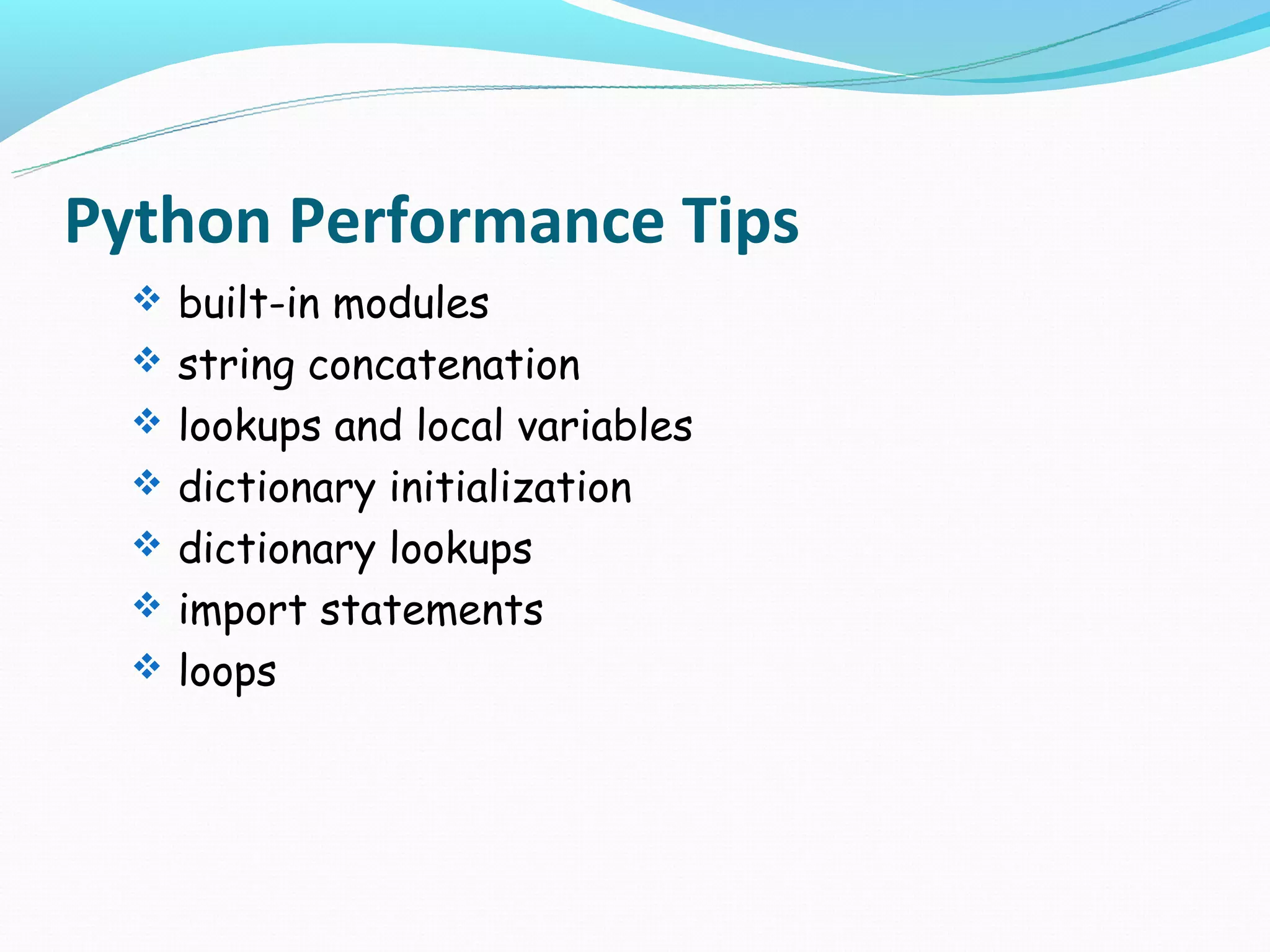
![Built-ins
- Highly optimized
- Sort a list of tuples by it’s n-th field
def sortby(somelist, n):
nlist = [(x[n], x) for x in somelist]
nlist.sort()
return [val for (key, val) in nlist]
n = 1
import operator
nlist.sort(key=operator.itemgetter(n))](https://image.slidesharecdn.com/profilingandoptimization-120929002305-phpapp02/75/Profiling-and-optimization-21-2048.jpg)
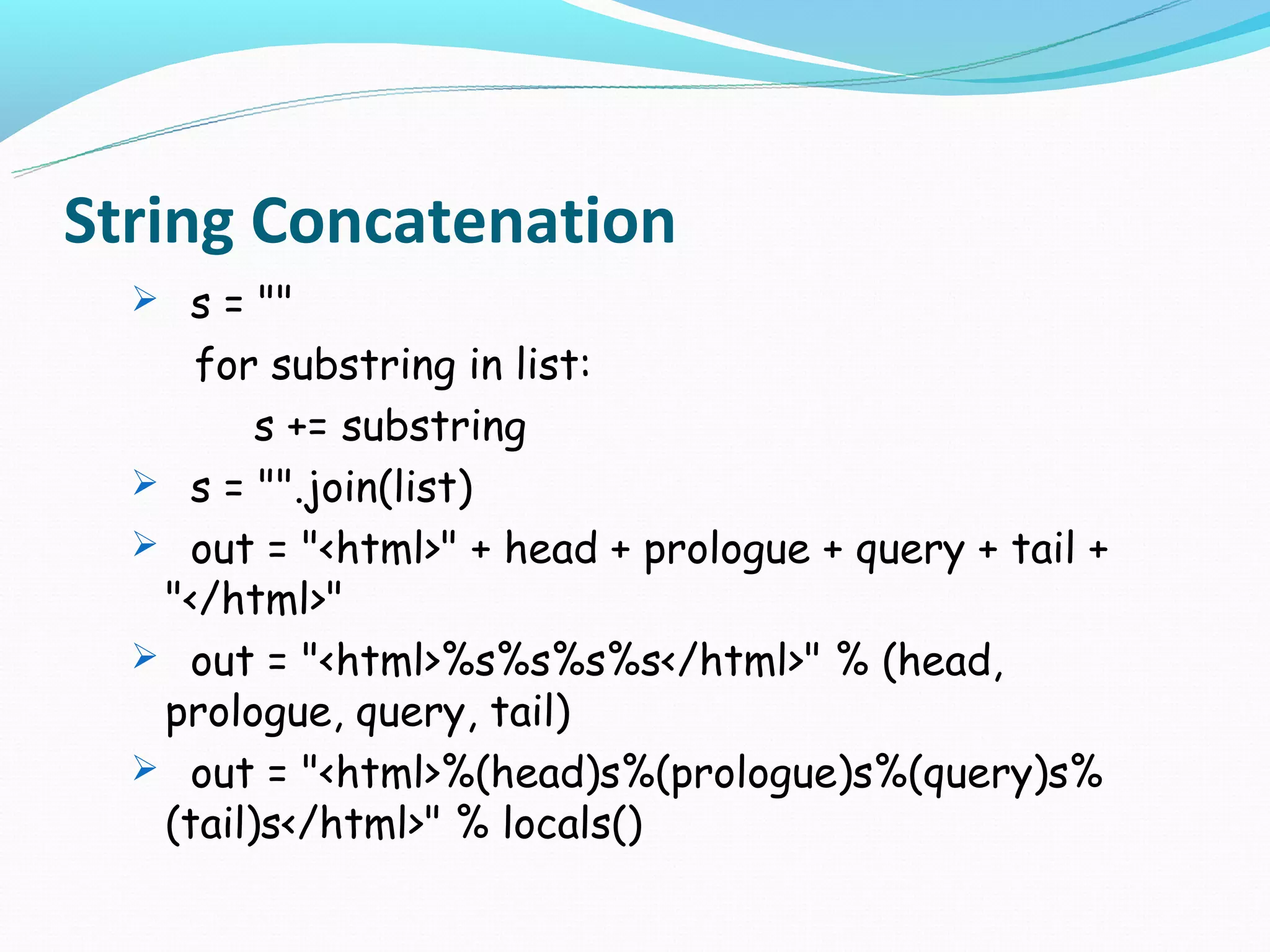
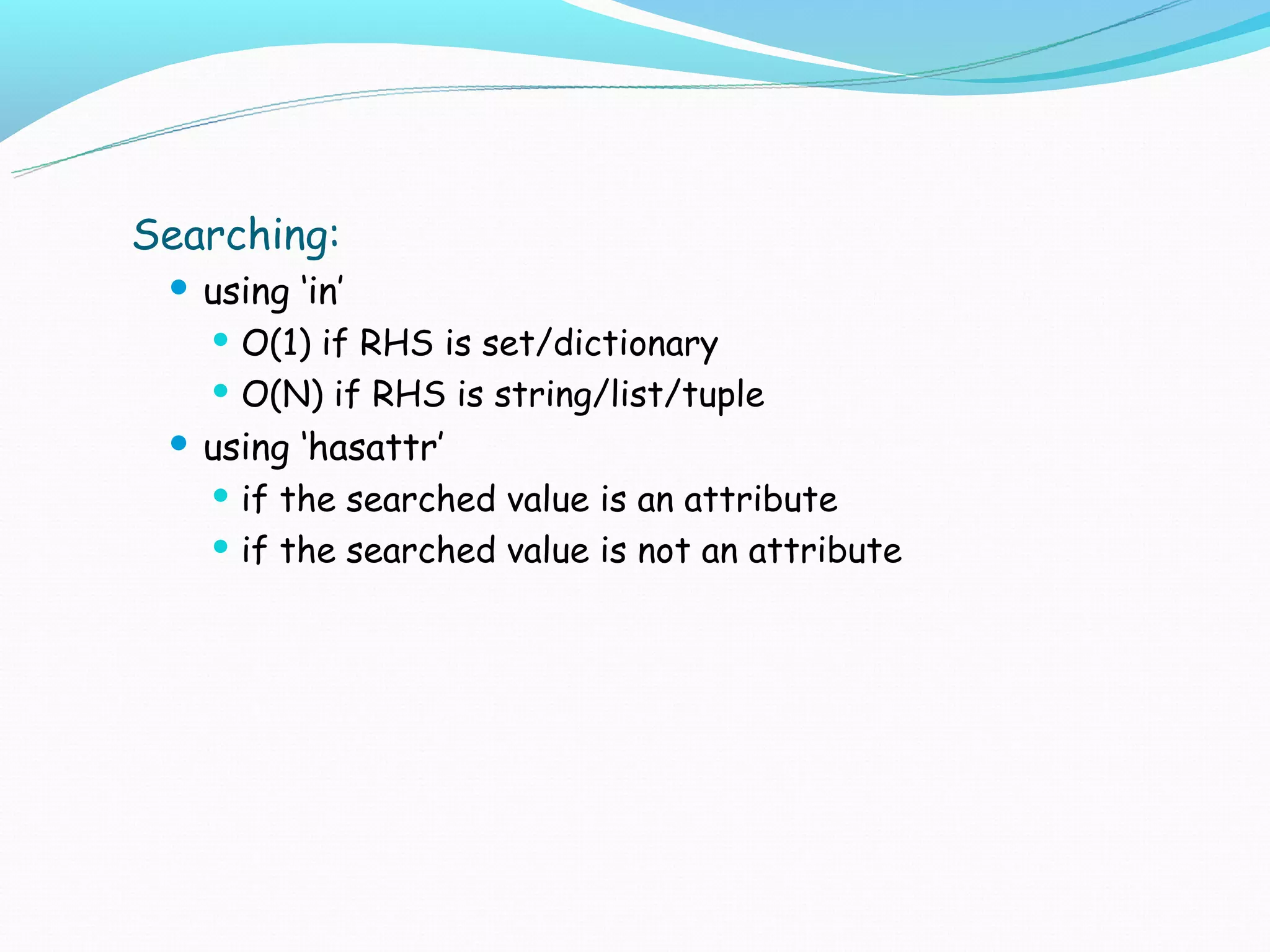
![Loops:
list comprehensions
map as for loop moved to c – if the body of the loop is a
function call
newlist = []
for word in oldlist:
newlist.append(word.upper())
newlist = [s.upper() for s in oldlist]
newlist = map(str.upper, oldlist)](https://image.slidesharecdn.com/profilingandoptimization-120929002305-phpapp02/75/Profiling-and-optimization-24-2048.jpg)
![Lookups and Local variables:
evaluating function references in loops
accessing local variables vs global variables
upper = str.upper
newlist = []
append = newlist.append
for word in oldlist:
append(upper(word))](https://image.slidesharecdn.com/profilingandoptimization-120929002305-phpapp02/75/Profiling-and-optimization-25-2048.jpg)
![Dictionaries
Initialization -- try... Except
Lookups -- string.maketrans
Regular expressions:
RE's better than writing a loop
Built-in string functions better than RE's
Compiled re's are significantly faster
re.search('^[A-Za-z]+$', source)
x = re.compile('^[A-Za-z]+$').search
x(source)](https://image.slidesharecdn.com/profilingandoptimization-120929002305-phpapp02/75/Profiling-and-optimization-26-2048.jpg)

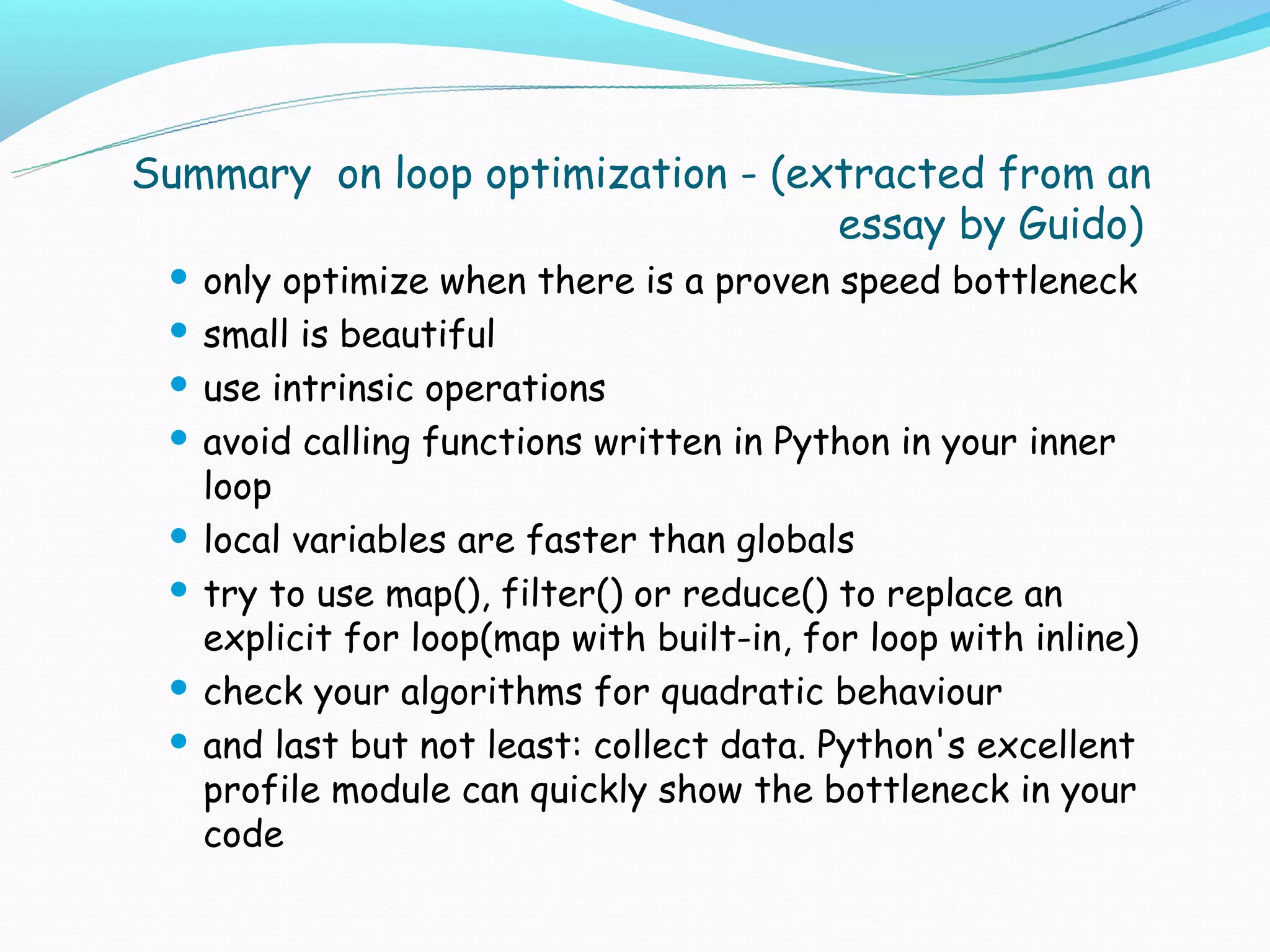
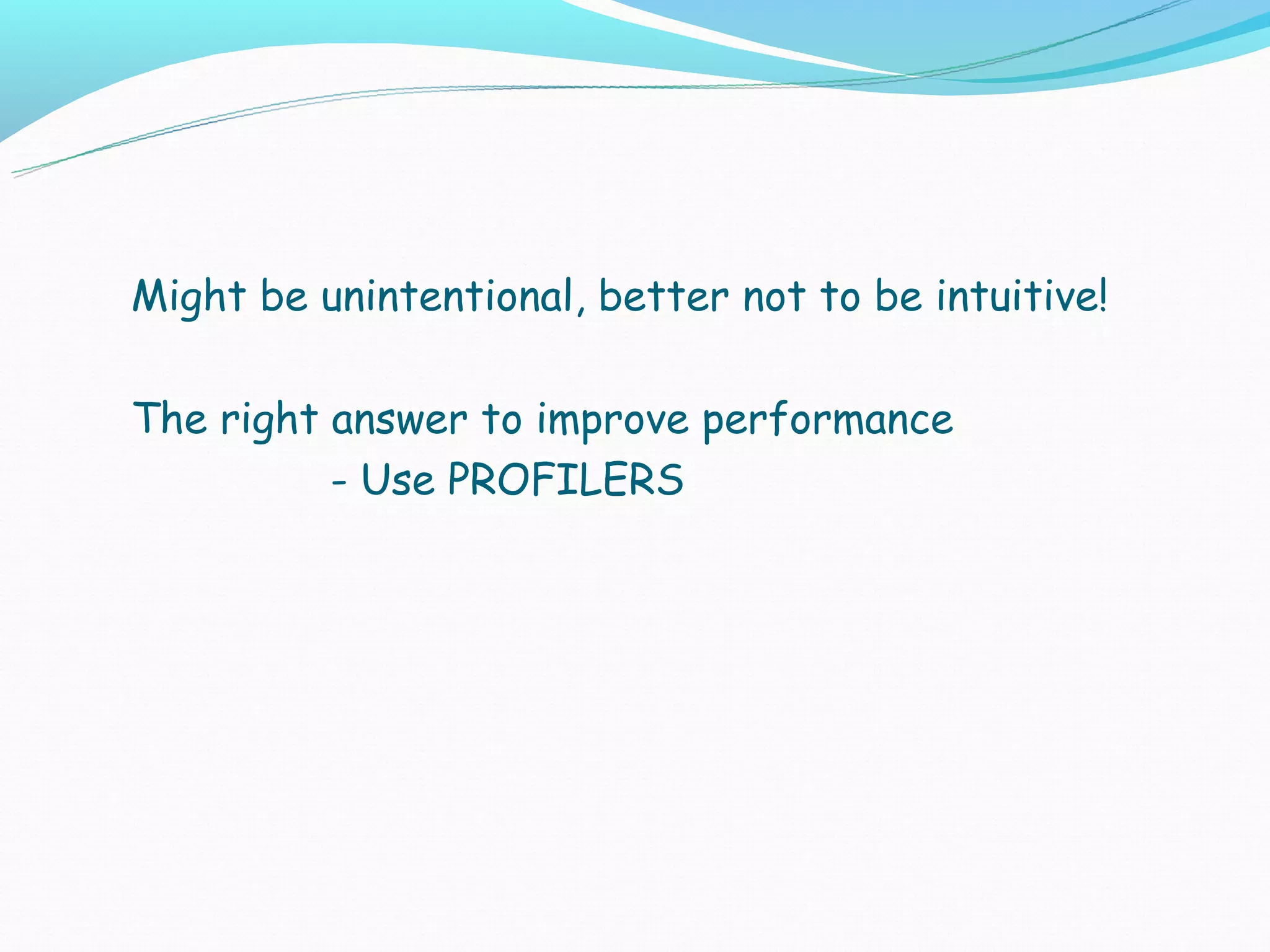

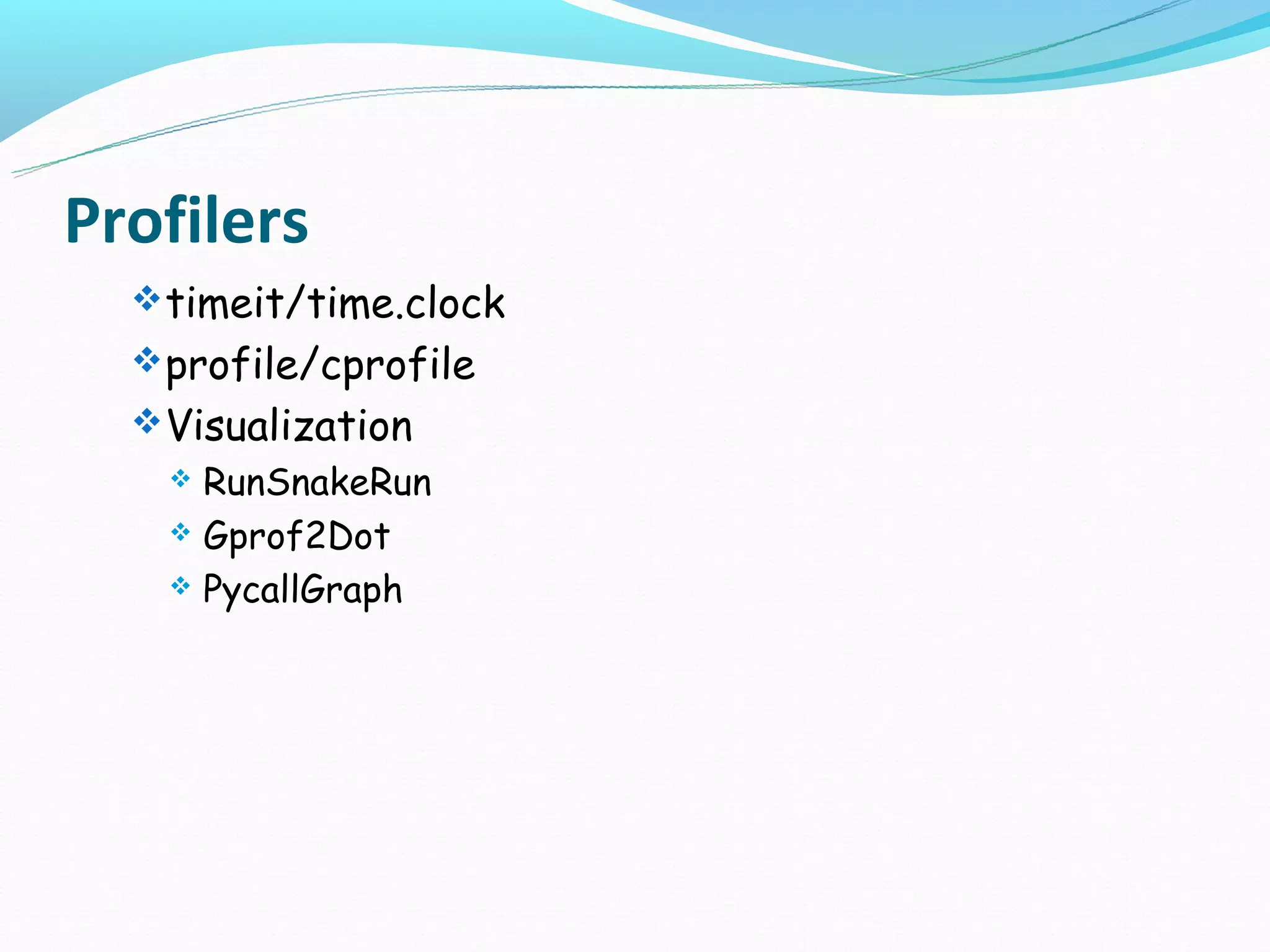
![timeit
precise performance of small code snippets.
the two convenience functions - timeit and repeat
timeit.repeat(stmt[, setup[, timer[, repeat=3[,
number=1000000]]]])
timeit.timeit(stmt[, setup[, timer[, number=1000000]]])
can also be used from command line
python -m timeit [-n N] [-r N] [-s S] [-t] [-c] [-h]
[statement ...]](https://image.slidesharecdn.com/profilingandoptimization-120929002305-phpapp02/75/Profiling-and-optimization-32-2048.jpg)
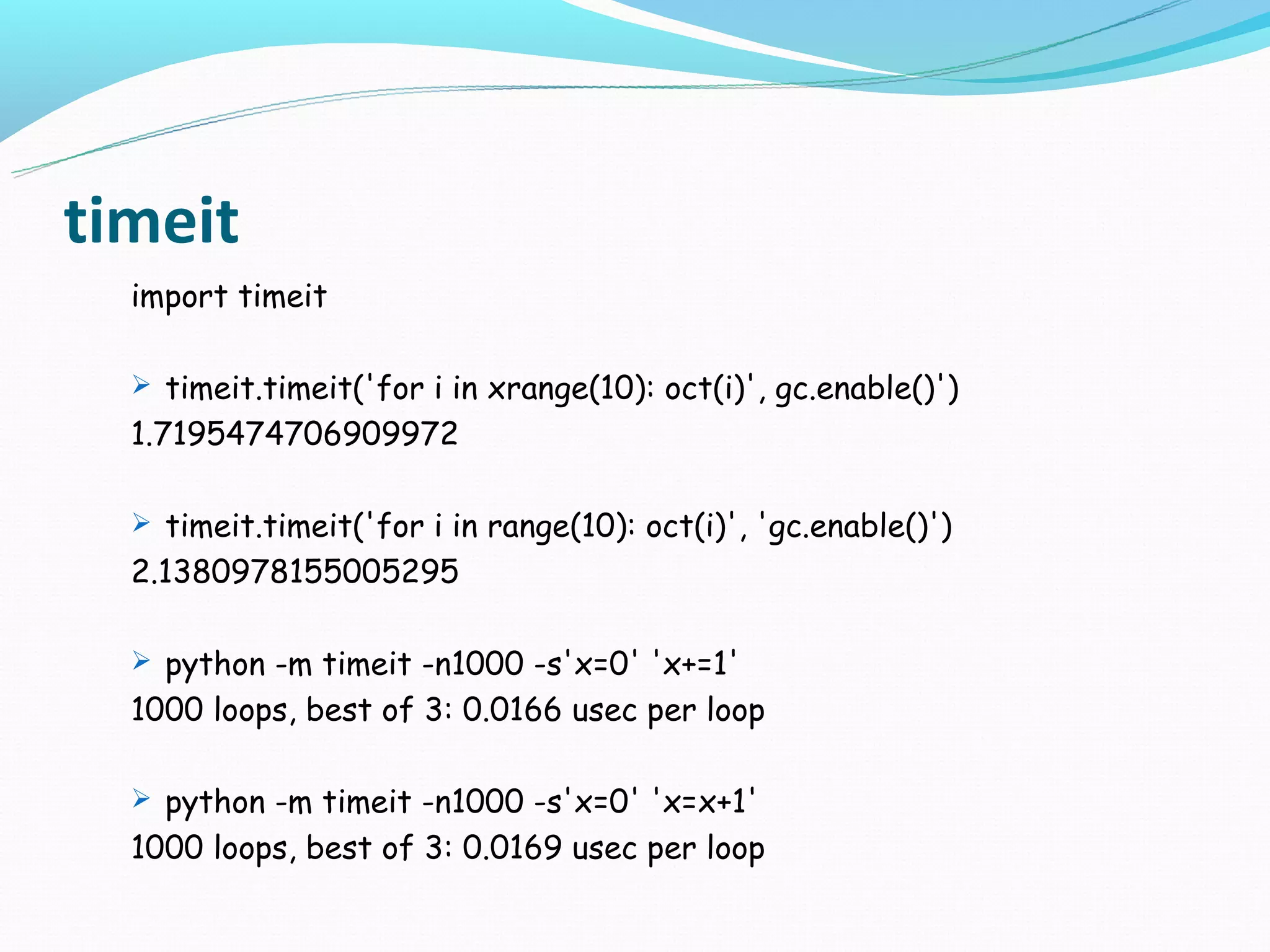

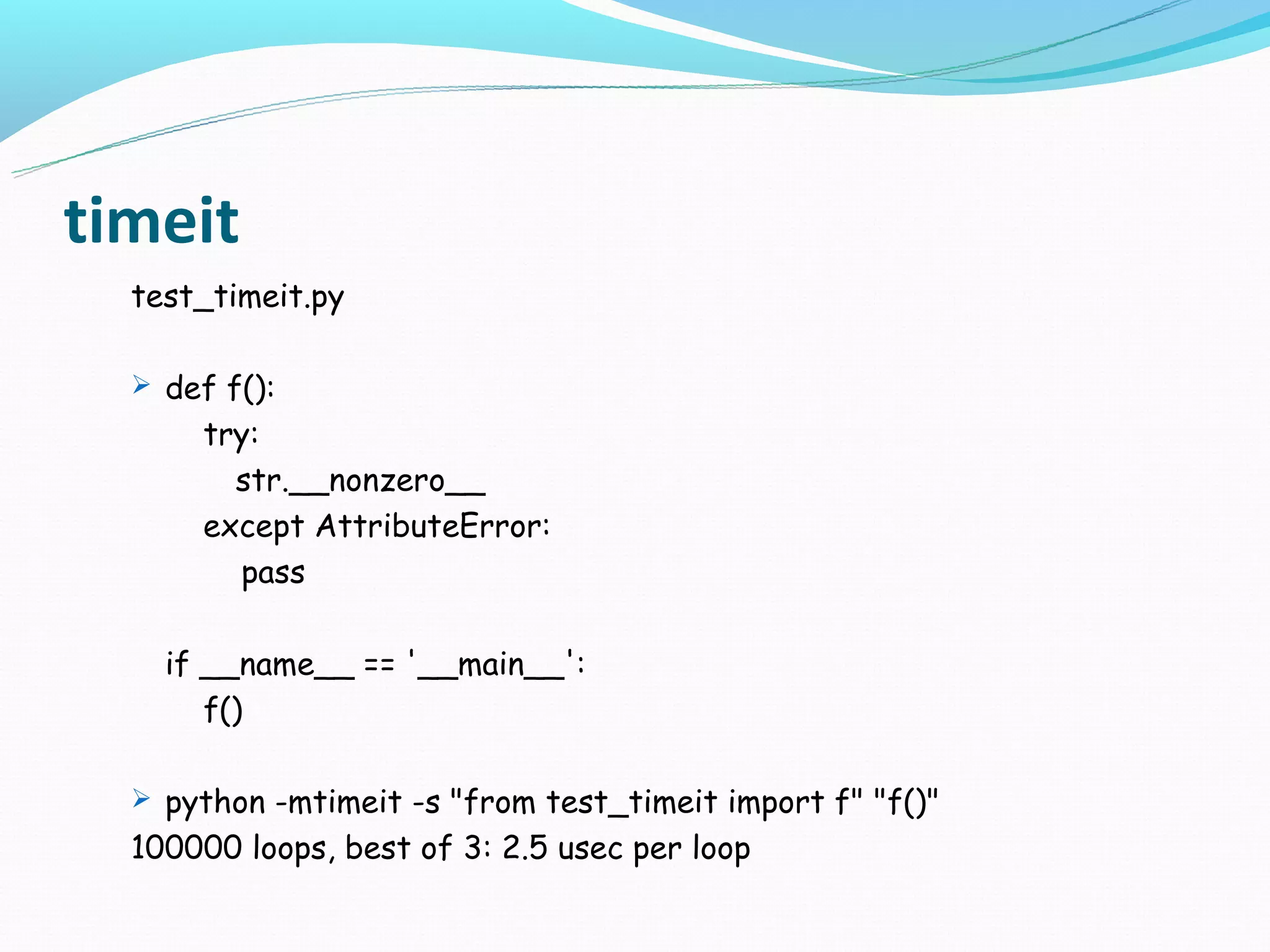
![cProfile/profile
Deterministic profiling
The run time performance
With statistics
Small snippets bring big changes!
import cProfile
cProfile.run(command[, filename])
python -m cProfile myscript.py [-o output_file] [-s
sort_order]](https://image.slidesharecdn.com/profilingandoptimization-120929002305-phpapp02/75/Profiling-and-optimization-36-2048.jpg)

